The UK is home to several geese species, some native and others migratory. Common species include the greylag, Canada and pink-footed, as well as migratory Brent and barnacle geese.
Geese are typically found in wetlands, coastal areas and farmland, where they gather in groups to feed on seeds, grass, potatoes and small invertebrates.
Learn more about the UK's geese species with our simple identification guide, including population numbers, migration routes and favourite habitats.
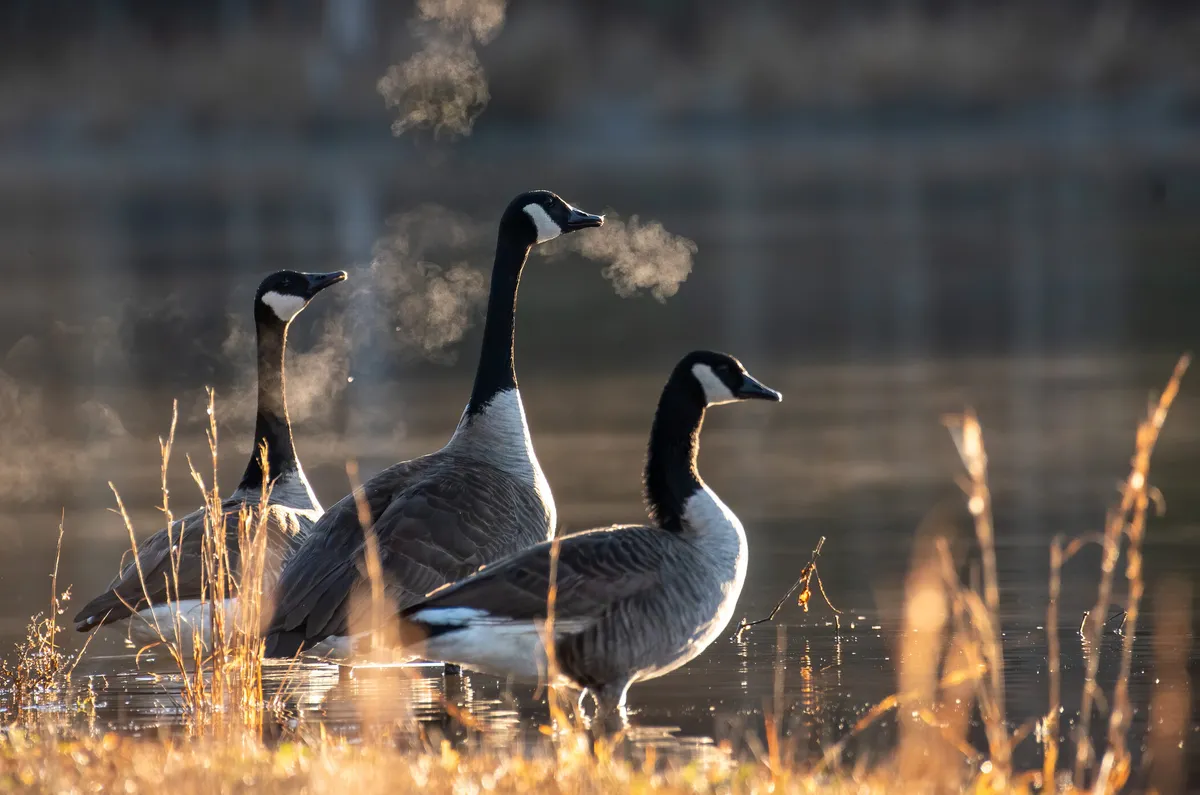
What is a group of geese called?
A group of geese on the ground is known as a gaggle. During flight a group of geese is called a skein. Why the difference in collective nouns, you ask? Geese usually form a V-shaped pattern as they fly. A 'skein' is a length of thread or yarn, while the term 'gaggle' is more of an indicator of the rowdy noise geese make while on land.
Where do geese live?
Wetlands are the favoured home of geese, due to the fact that they are happy on land and in water. They are migratory birds, so they don't stay in one place, but they are predominantly near water.
When do geese migrate?
Geese migrate to Britain in autumn, overwintering on our shores before leaving once more in spring.
How to identify geese species found in the UK
White-fronted goose
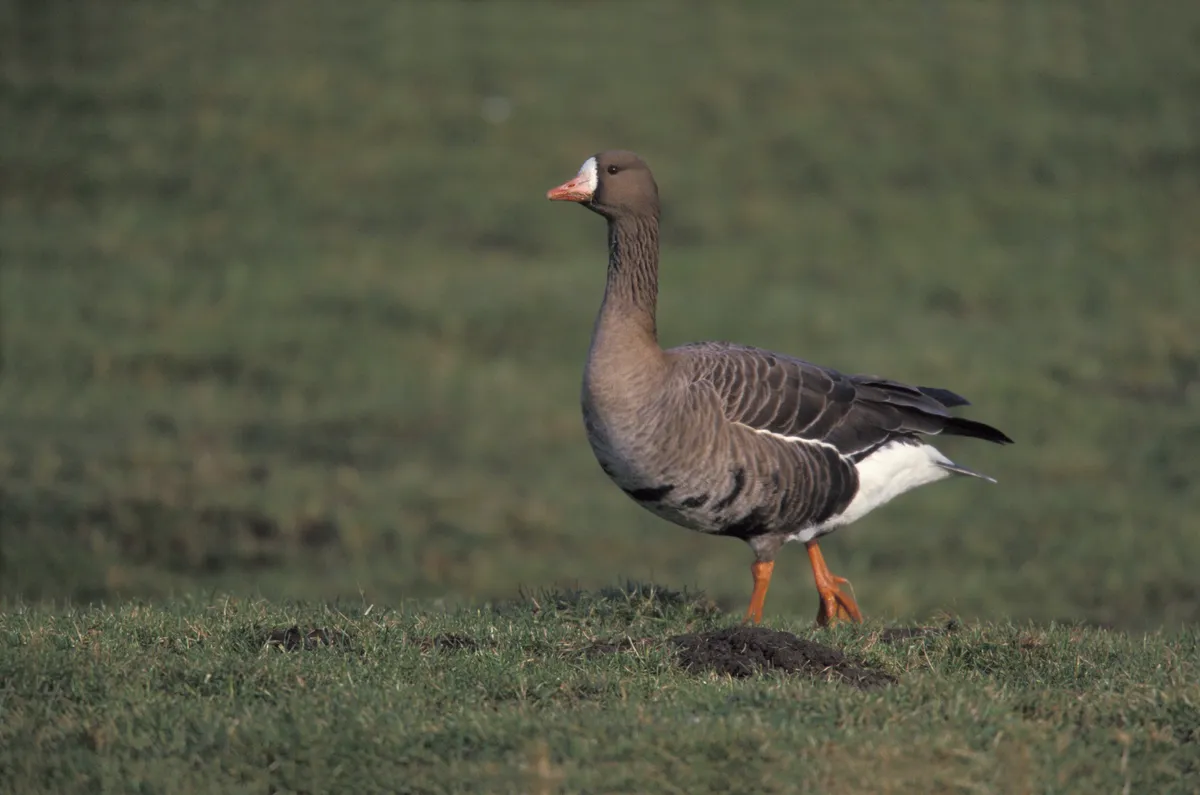
Some 15,000 white-fronts visit our coasts from Scotland to southern England, having summered in Greenland and Siberia. Siberian birds have pink bills, while Greenland birds’ bills are orange. The ‘white-fronted’ refers to the forehead and base of the bill.
You can see white-fronted geese in the UK from October to March.
Barnacle goose
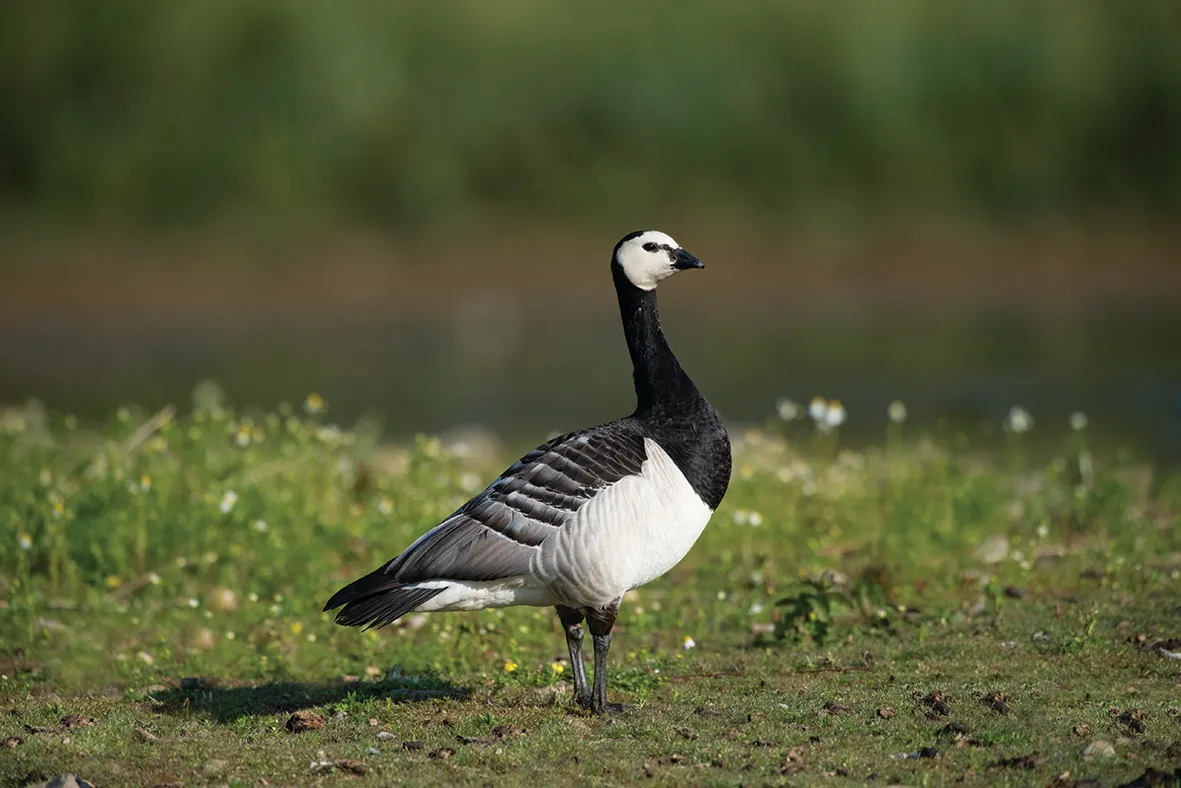
This small goose has a creamy face, short bill and black neck and winters in Scotland, Ireland and northern England after breeding in Greenland and Svalbard. There’s a small resident breeding group of 1,000 pairs. Winter population is 90,000. You can spot thousands of barnacle geese in the skies over Caerlaverock, one of the best wetlands to visit in the UK.
Islay is home to three-fifths of Greeland's barnacle geese, and Loch Gruinart in Islay is a great place to spot them, alongside white-fronted geese and white-tailed eagles.
You can see Barnacle geese in the UK from October to March, and they are particularly found in the north-west of the UK.
Brent goose
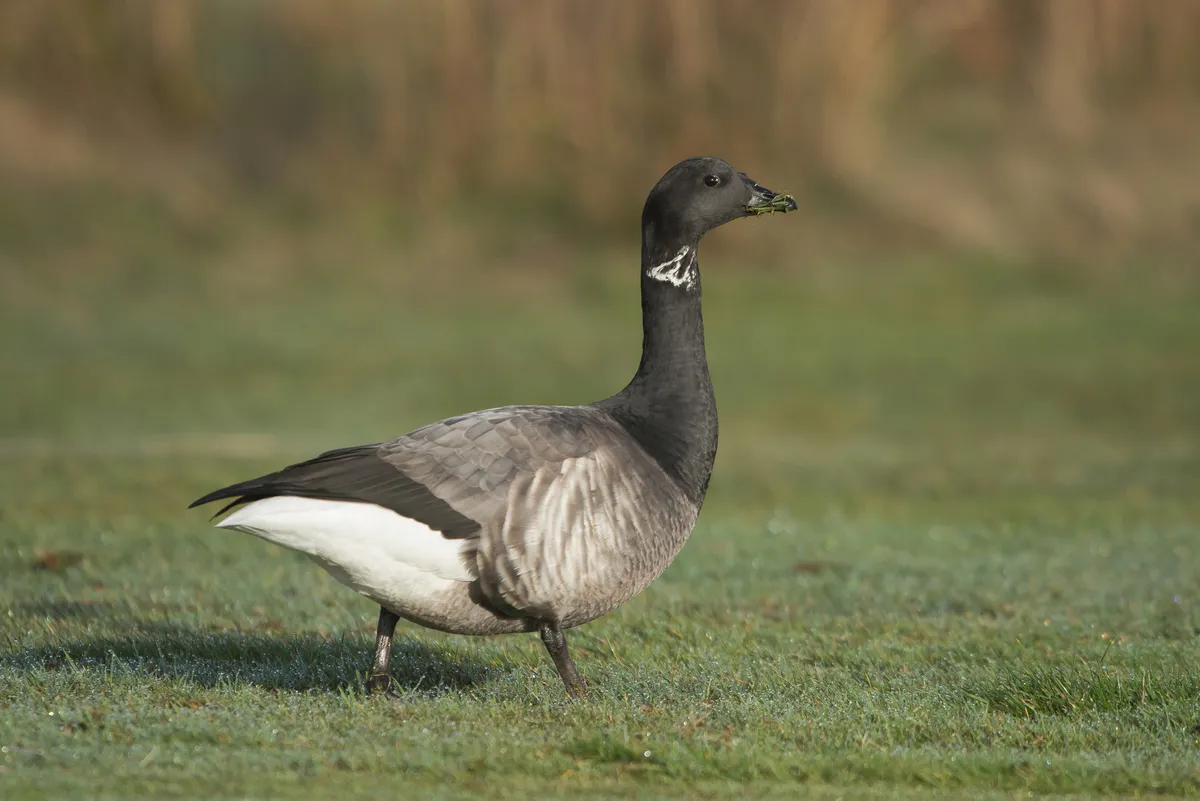
Little bigger than a mallard, this dark-plumaged goose is most concentrated along the east coast, especially East Anglia. Over 90–100,000 arrive in winter from their nesting grounds in Siberia, feeding noisily on coastal marshes. They feed mainly on eel-grass and seaweed, due to the fact that they are based on sandy estuaries and saltmarshes.
You can see Brent geese in the UK from October to March.
Greylag goose
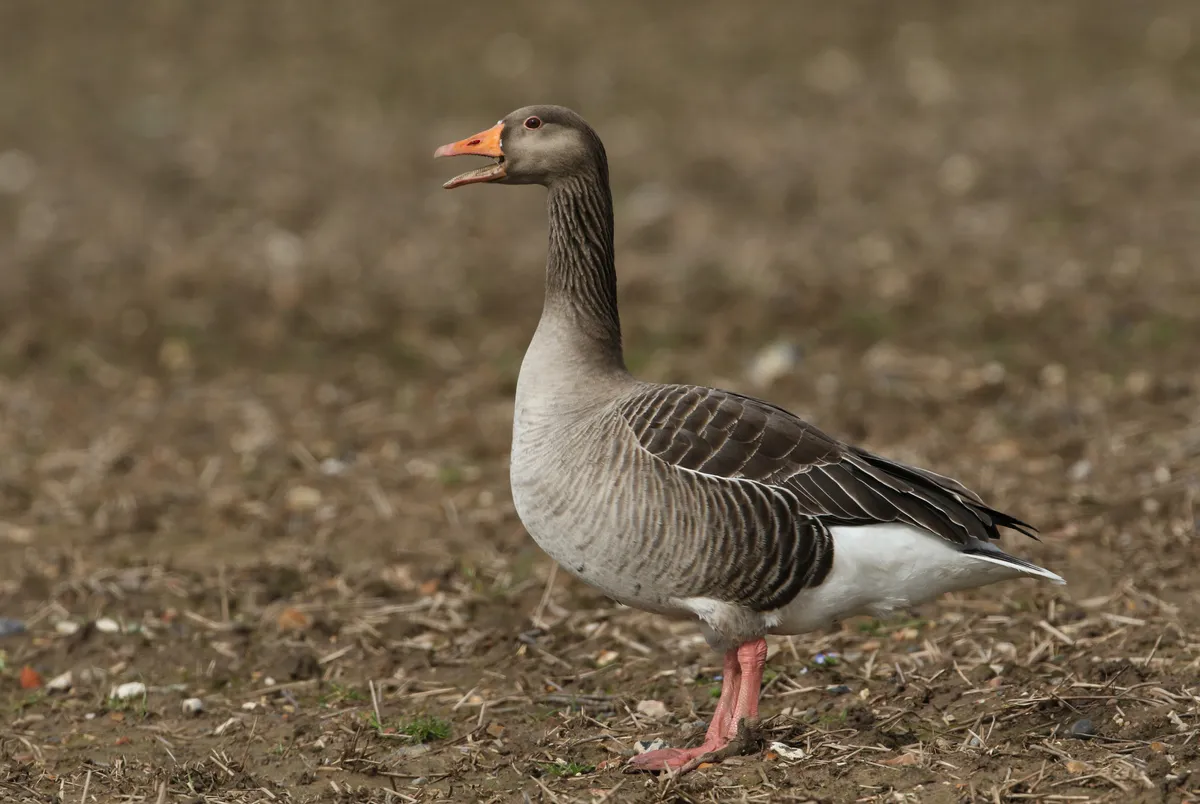
Our largest and most common resident goose has grey plumage and an orange bill; 140,000 resident birds are bolstered by 90,000 winter arrivals from Iceland. The core breeding population of ‘wild geese’ is in Scotland. The greylag goose is classified as Amber under the Red List for Birds in the UK and is protected under the Wildlife and Countryside Act, 1981.
You can see Greylag geese in the UK from January to December, predominantly in Scotland.
Canada goose
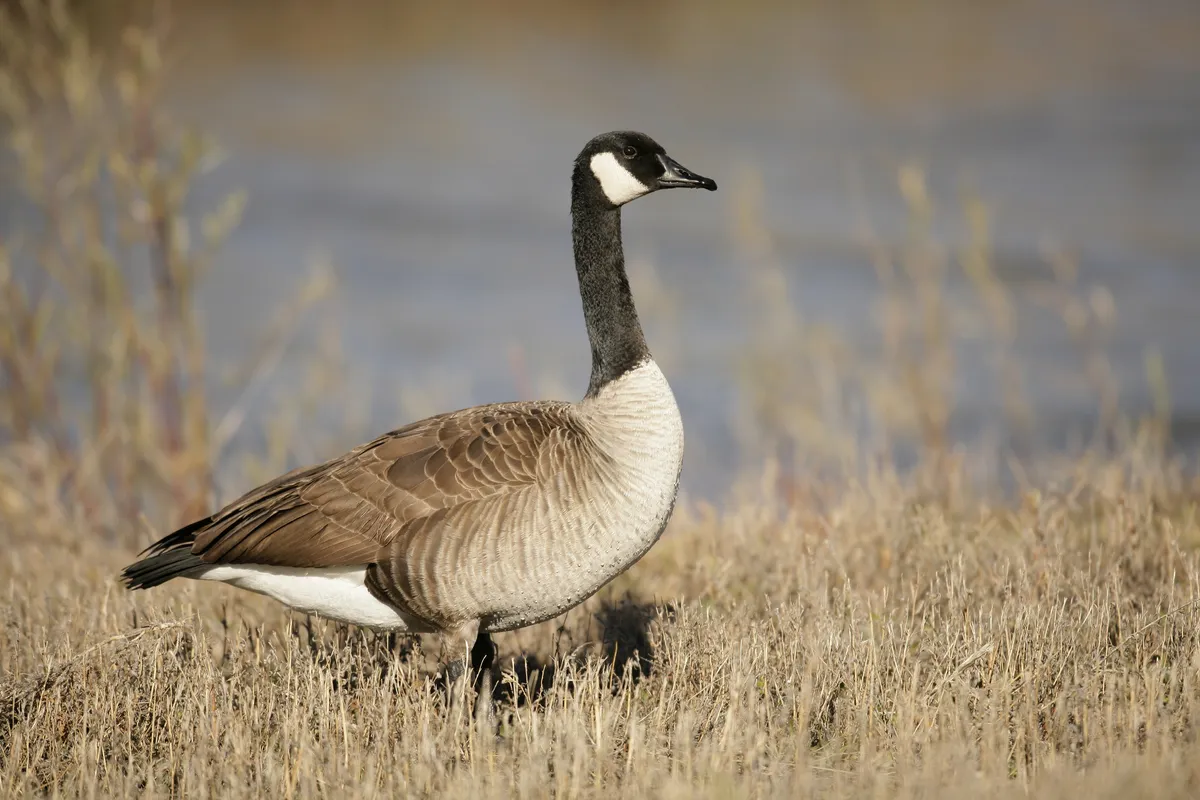
Introduced from North America in the 17th century, there are now 62,000 pairs of Canada geese in the UK and the number is growing. Large and with a brown body and black neck, it has become the UK’s most familiar goose of park lakes. It is seen as a pest in some areas. It's the largest goose in the UK these days – and they're bold, brave and unafraid!
You can see Canada geese in the UK from January to December. It is found pretty much all over the UK, except in the north of Scotland.
Bean goose
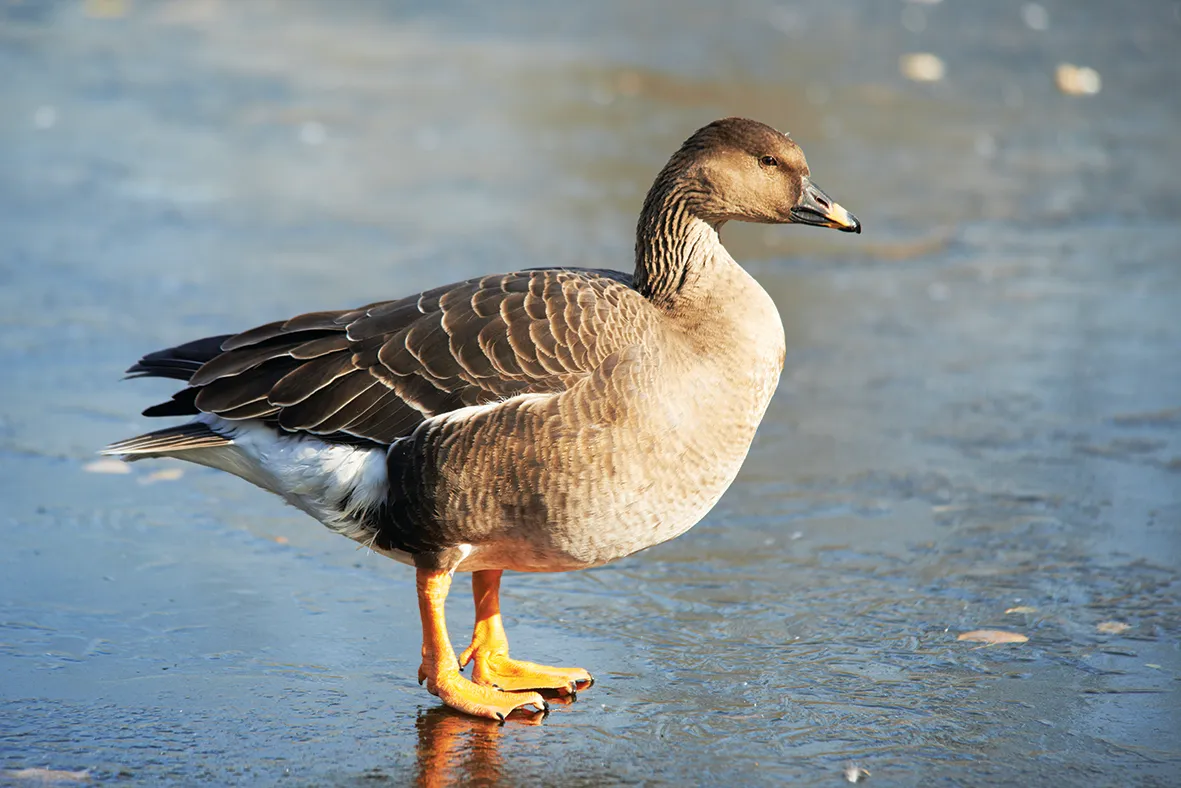
Two similar species, the taiga and the tundra bean goose winter in Scotland and eastern England in small numbers (fewer than 500 individuals of each species). Both species are dark grey-brown with orange legs and bills.
You can see Bean geese in the UK in the winter period, usually from October to March.
Pink-footed goose
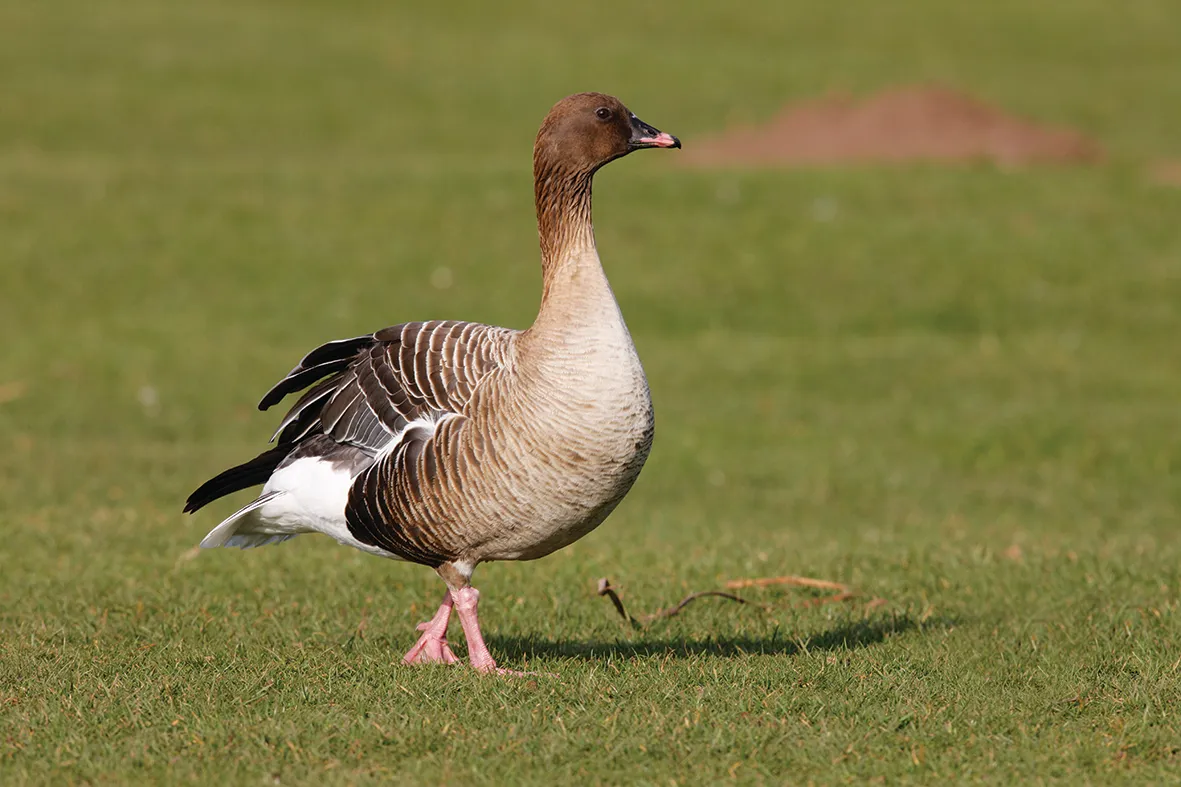
This medium-sized goose resembles the white-fronted but has a dark face and bill and pink legs. Arriving from Greenland and Iceland, around 300,000 winter on the east coast, especially Norfolk, though some 50,000 choose Lancashire’s coast. The pink-footed goose is easily heard when flying in its V-formation, thanks to its loud, honking call.
You can see Pink-footed geese in the UK from October to March, predominantly in Scotland, North West England and East Anglia.
Egyptian goose
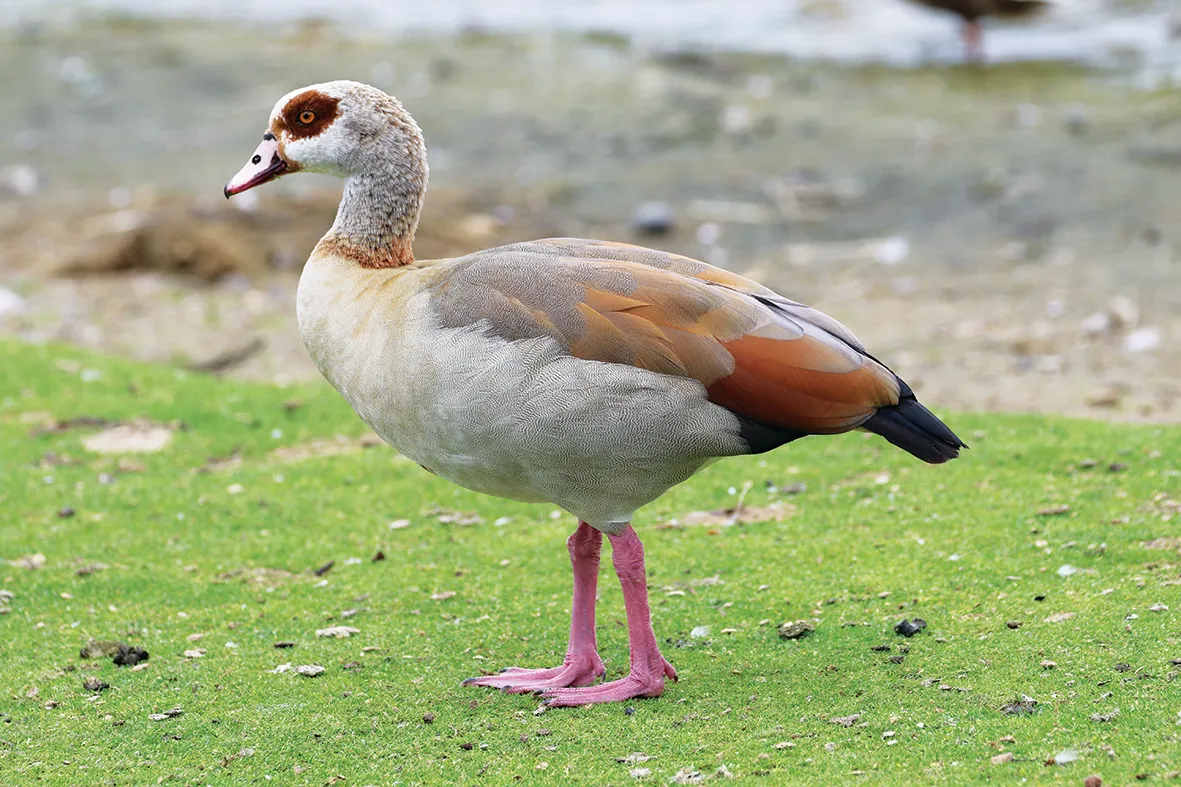
This exotic-looking species of goose has a brown eye patch and a blend of pale, brown and grey plumage. An escapee from ornamental collections, there are now 1,100 breeding pairs across the UK. They are naturally found in Africa, but were introduced to the UK to be kept in wildfowl collections. They then escaped and have since established populations in the wild.
You can see Egyptian geese in the UK throughout the year, with the largest populations found in south-central England, East Anglia and the East Midlands.
Where do geese migrate to from the UK?
The different species migrate to different locations, including Greenland, Iceland and Svalbard.
Learn more about Britain's migratory bird species
What do geese eat?
As grazing birds, geese eat a variety of plants and seeds, including grass and roots found along the water's edge.
Geese or goose?
'Geese' is the plural form of 'goose'. If there is one goose, it's is 'goose', but if there are more than one goose, it becomes 'geese'.

